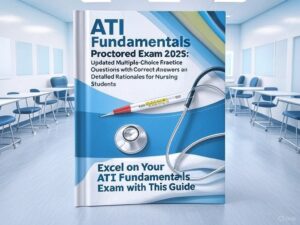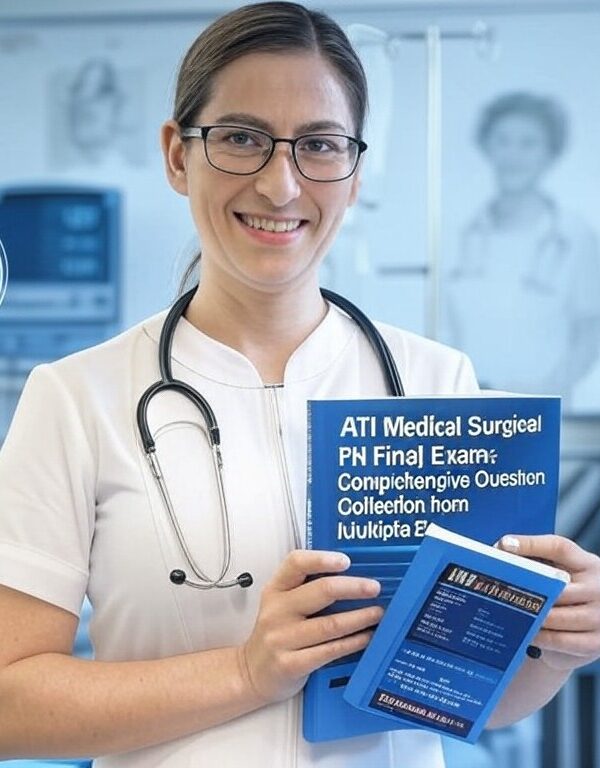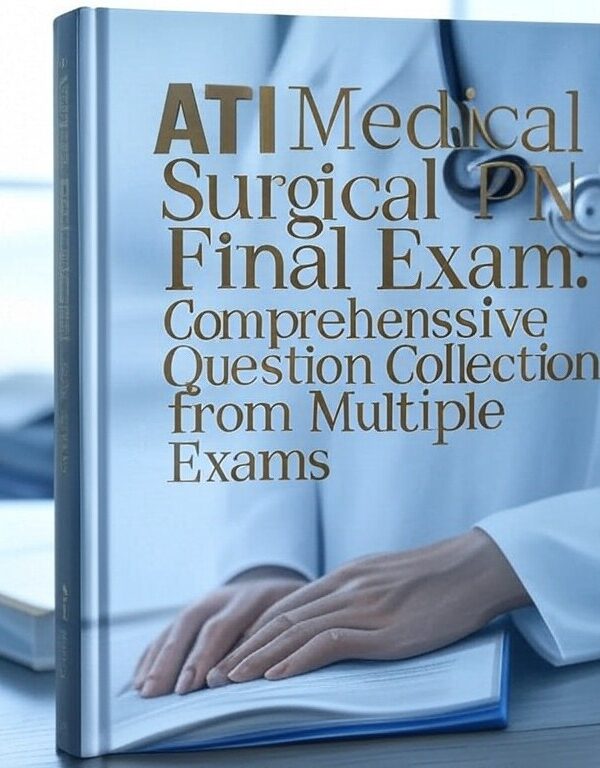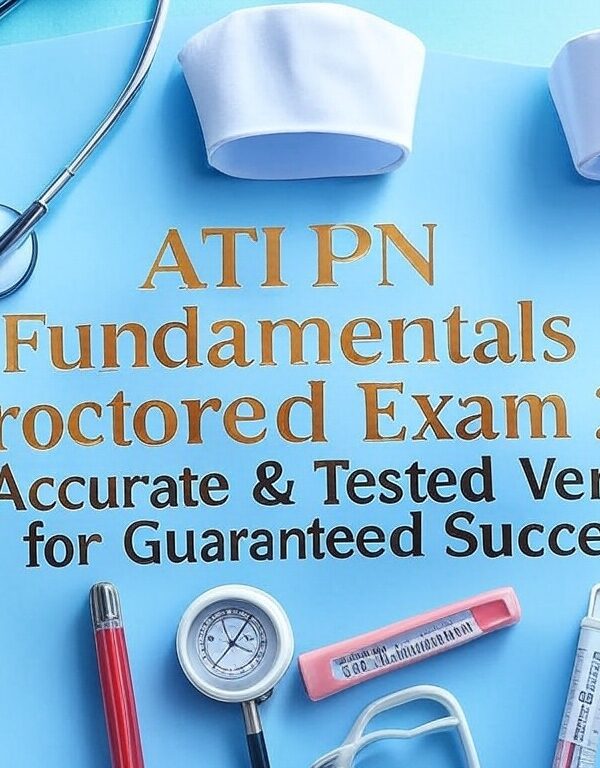-
Updated multiple-choice questions for ATI Fundamentals 2025
-
Correct answers with detailed rationales for deeper learning
-
Covers all key nursing fundamentals topics
-
Perfect for nursing students preparing for the proctored exam
-
Enhances critical thinking and exam readiness
Preview
Question 1
A nurse is caring for an 82-year-old client in the ER who has an oral body temp of 38.3°C
(101°F), a pulse rate of 114/min, and a RR of 22/min. He is restless and his skin is warm.
Which of the following are appropriate nursing interventions for this client? Select all
that apply.
A. Obtain culture specimens before initiating antimicrobials
B. Restrict the client’s oral fluid intake
C. Encourage the client to limit activity and rest
D. Allow the client to shiver to dispel excess heat
E. Assist the client with oral hygiene frequently
Correct answers: A, C, E
Rationale: Cultures should be obtained before starting antibiotics to ensure accurate
results. Rest conserves energy and helps reduce metabolic demands. Oral hygiene
helps prevent drying and cracking of the mucous membranes.
Question 2
A nurse is instructing an AP in caring for a client who has a low platelet count due to
chemotherapy. What is the nurse’s priority instruction for measuring vital signs?
A. “Don’t measure the client’s temp rectally.”
B. “Count the client’s radial pulse for 30 sec and multiply by 2.”
C. “Don’t let the client know you are counting her respirations.”
D. “Let the client rest for 5 minutes before you measure her BP.”
Correct answer: A
Rationale: Rectal temperature measurement could lead to mucosal injury and
bleeding, which is a high risk in thrombocytopenic patients.
Question 3
A nurse is instructing nursing students in measuring a client’s respiratory rate. Which
guidelines should the nurse include? Select all that apply.
A. Place the client in semi-Fowler’s position
B. Have the client rest an arm across the abdomen
C. Observe one full respiratory cycle before counting the rate
D. Count the rate for 1 min if it is regular
E. Count and report any sighs the client demonstrates
Correct answers: A, B, C
Rationale: These practices improve accuracy. Sighs are normal and don’t need to be
reported. A full 1-minute count is necessary only if the rate is irregular.
Question 4
A nurse is admitting a client who has a fractured femur and obtains a BP reading of
140/94 mmHg. The client denies any history of hypertension. What should the nurse do
next?
A. Request a prescription for antihypertensive medication
B. Ask the client if she is experiencing pain
C. Request a prescription for anti-anxiety medication
D. Return in 30 minutes to recheck the client’s BP
Correct answer: B
Rationale: Pain can elevate BP; assessing pain is the priority.












Reviews
There are no reviews yet.